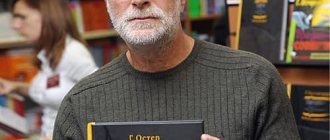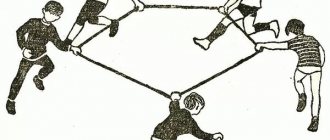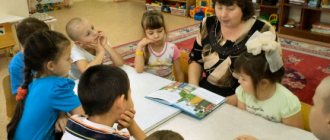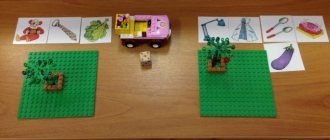The role of fiction in younger groups
From the works you can find out what is good, what is bad, how you can and cannot act. Children learn to understand such moments, analyze them with the help of adults and independently in future activities. With the help of stories and fairy tales, the baby develops his imagination. Listening to the description of characters or events, he builds an image of them in his head, fantasizes, thinks out, builds logical chains. The children's team in a preschool institution is diverse, so it is worth taking into account the characteristics and wishes of each.
Lesson with children
In addition to regular reading, you need to include guiding questions that will help the child navigate the text, isolate and remember events. Thus, we can talk about the role:
- development of imagination;
- logical thinking;
- formulating thoughts;
- memorization and reproduction;
- concentration;
- receiving the information.
Note! In the course of getting acquainted with literature, a child develops his own perception of the world, he forms an idea about it. Looking at the illustrations, he can reproduce the event, talk about it, and this is how visual memory is trained.
How do younger preschoolers perceive literature?
It must be taken into account that it can be difficult for young children to understand very simple things, so they will often be distracted from the text and ask their own questions, especially for the second group. The teacher must be prepared for this. There is no need to be nervous or confused; all questions should be treated with understanding. It is wise to poll the group to find answers.
You also need to pay attention to significant details, since children themselves cannot catch them. You definitely need to ask leading questions; it’s better to prepare a list in advance:
- why did the hero do this?
- is it good or bad;
- how it should have been done;
- who was the hero;
- what they were doing;
- would you like to visit this fairy tale?
Such questions will allow children to be included in the reading and conversation process. Features of perception can be considered:
- absentmindedness;
- division only into bad and good;
- everything is tried on;
- restlessness, may not listen for long;
- I prefer illustrations and cartoons;
- gravitate toward the magical;
- sensitive to corrections from a teacher or teacher;
- stick to their opinions.
Note! It is necessary to take into account the peculiarities of perception in order to effectively interact with a child.
It is best to work in small groups. Ideally, this is an interest group, that is, the book is chosen at the request of everyone. This way you can achieve great productivity in your work, since children will be interested in listening, looking at pictures and remembering the plot.
As for pictures, they are especially important for the first group. It is the pictures that help to reproduce the image of the character in your head, correlate it with the text you heard and draw a conclusion about the work. Children often need to see a picture to understand the concept.
Note! You may encounter the fact that children do not want to pick up a book, but prefer to be read to. This may be due to the fact that earlier the teacher or parent did not show due patience in teaching the child to read. That is, the baby was not yet able to read the word, and the parent did not have enough patience, and he took the book. Such negative experiences can discourage reading.
How to teach your child to use a pencil or pen correctly
It is important that children also participate in reading. This can be done by showing pictures of characters with captions. Even such a short reading for everyone together and for everyone individually can train speech and memory for letters.
List of literature for reading in the 2nd junior group according to the Federal State Educational Standard
An approximate list of reading materials for children in the 2nd junior group.
Russian folklore
Songs, nursery rhymes, chants.
“Finger-boy...”, “Little bunny, dance...”, “The night has come...”, “Magpie, magpie...?,” “I’m going, going to see the woman, to the grandfather...”, “Tili-bom! Tili-bom! ..."; “Like our cat...”, “The squirrel is sitting on a cart...”, “Ay, kachi-kachi-kachi”, “We lived with grandma...”, “Chiki-chik-chikalochka...”, “Little kitty-murysenka...”, “ Zarya-Zaryanitsa..."; “Ant-grass...”, “There are three hens on the street...”, “Shadow, shadow, shady...”, “Rock-hen...”, “Rain, rain, more...”, “Ladybug..,” , "Rainbow-arc...".
Fairy tales.
"Kolobok", arr. K. Ushinsky; “The Wolf and the Little Goats”, arr. A. N. Tolstoy; “Cat, rooster and fox”, arr. M. Bogolyubskaya; "Swan geese"; "The Snow Maiden and the Fox"; “Goby - black barrel, white hooves”, arr. M. Bulatova; "The Fox and the Hare", arr. V. Dahl; “Fear has big eyes”, arr. M. Serova; "Teremok", arr. E. Charushina.
Folklore of the peoples of the world
Songs.
“The Ship”, “The Brave Men”, “Little Fairies”, “The Three Trappers” English, arr. S. Marshak; “What a rumble”, trans. from Latvian S. Marshak; “Buy onions...”, trans. with scotch N. Tokmakova; “Conversation of Frogs”, “Uncooperative Hoopoe”, “Help!” lane from Czech S. Marshak.
Fairy tales.
“Mitten”, “Goat-dereza” in Ukrainian, arr. E. Blaginina; “Two Greedy Little Bears”, Hungarian, arr. A. Krasnova and V. Vazhdaeva; “Stubborn goats”, Uzbek, arr. Sh. Sagdully; “Visiting the Sun”, translated from Slovak. S. Mogilevskaya and L. Zorina; "Nanny Fox", trans. from Finnish E. Soini; “The Brave Well Done”, trans. from Bulgarian L. Gribova; “Pykh”, Belarusian, arr. N. Myalika; “The forest bear and the naughty mouse”, Latvian, arr. Y. Vanaga, per. L. Voronkova; "The Rooster and the Fox", trans. with scotch M, Klyagina-Kondratieva; "The Pig and the Kite", a fairy tale of the peoples of Mozambique, trans. from Portugal Yu. Chubkova.
Works of poets and writers of Russia
Poetry.
K. Balmont. "Autumn"; A. Blok. "Bunny"; A. Koltsov. “The winds are blowing...” (from the poem “Russian Song”); A. Pleshcheev. “Autumn has come...”, “Spring” (abbr.); A. Maikov. “Lullaby”, “The Swallow Has Rushed...” (from modern Greek songs); Ah, Pushkin. “Wind, wind! You are mighty!..”, “Our light, sunshine!.”, “A month, a month...” (from “The Tale of the Dead Princess and the Seven Knights”); S. Cherny. “The Preacher”, “About Katyusha”; S. Marshak. “Zoo”, “Giraffe”, “Zebras”, “Polar Bears”, “Little Ostrich”, “Penguin”, “Camel”, “Where the Sparrow Dined” (from the series “Children in a Cage”); “A Quiet Tale”, “The Tale of a Smart Mouse”; K. Chukovsky. “Confusion”, “Stolen Sun”, “Moidodyr”, “Tsokotukha Fly”, “Hedgehogs Laugh”, “Christmas Tree”, “Aibolit”, “Miracle Tree”, “Turtle”; S. Grodetsky, “Who is this?”; V. Berestov. “Hen with Chicks”, “Bull”; N. Zabolotsky. “How the mice fought with the cat”; V. Mayakovsky. “What is good and what is bad?”, “Every page is either an elephant or a lioness”; K. Balmont, “Mosquitoes-Makariki”; P. Kosyakov. "She's All"; A. Barto, P. Barto. “Greasy girl”; S. Mikhalkov. "Song of Friends"; E. Moshkovskaya. "Greedy"; I. Tokmakova. "Bear".
Prose.
K. Ushinsky. “Cockerel with his family”, “Ducks”, “Vaska”, “Fox-Patrikeevna”; T. Alexandrova. "Burik the Bear"; B. Zhitkov. “How we went to the zoo”, “How we arrived at the zoo”, “Zebra”, “Elephants”, “How the elephant bathed” (from the book “What I Saw”); M. Zoshchenko. -Smart bird”; G. Tsyferov. “About Friends”, “When There Are Not Enough Toys” from the book “About the Chicken, the Sun and the Little Bear”); K. Chukovsky. “So and not so”; D. Mamin-Sibiryak. “The Tale of the Brave Hare - Long Ears, Slanting Eyes, Short Tail”; L. Voronkova. “Masha the Confused”, “It’s Snowing” (from the book “It’s Snowing”); N. Nosov “Steps”; D, Kharms. "Brave Hedgehog"; L. Tolstoy. “The bird made a nest...”; “Tanya knew the letters...”; “Varya had a siskin...”, “Spring has come...”; V. Bianchi. “Bathing bear cubs”; Yu. Dmitriev. "Blue hut"; S. Prokofiev. “Masha and Oika”, “When you can cry”, “The Tale of an ill-mannered mouse” (from the book “Fairy Tale Machines”); V. Suteev. "Three kittens"; A. N. Tolstoy. “Hedgehog”, “Fox”, “Cockerels”.
Works of poets and writers from different countries
Poetry
. E. Vieru. "The Hedgehog and the Drum", trans. with mold. Y. Akima; P. Voronko. "The Sly Hedgehog", trans. from Ukrainian S. Marshak; L. Mileva. "Swift Legs and Gray Clothes", trans. from Bulgarian M. Marinova; A. Milne. "Three Little Foxes", trans. from English N. Slepakova; N. Scored. "Pencil", trans. from Ukrainian 3. Alexandrova; S. Kapugikyan. “Who will finish drinking sooner”, “Masha does not cry” trans. from Armenian T. Spendiarova; A. Bosev. "Rain", trans. from Bulgarian I. Maznina; “The Finch Sings”, trans. from Bulgarian I. Tokmakova; M. Karem. "My cat", trans. from French M. Kudinova.
Prose.
D. Bisset. “The Frog in the Mirror”, translation, from English. N. Shereshevskaya; L. Muur. "Little Raccoon and the One Who Sits in the Pond", trans. from English O. Obraztsova; Ch. Yancharsky. “Games”, “Scooter” (from the book “The Adventures of Mishka Ushastik”), trans. from Polish V. Prikhodko; E. Bekhlerova. "Cabbage Leaf", trans. from Polish G. Lukina; A. Bosev. “Three”, translation, from Bulgarian. V. Viktorova; B. Potter. "Ukhti-Tukhti", trans. from English O. Obraztsova; J. Capek. “A Hard Day”, “Into the Forest”, “Yarinka’s Doll” (from the book “The Adventures of a Dog and a Cat”), trans. . Czech G. Lukina; O. Alfaro. "Hero Goat", trans. from Spanish T. Davityants; O. Panku-Yash. "Good night, Dooku!", trans. from Romanians M. Olsufieva, “Not only in kindergarten” (abbr.), trans. from Romanians T. Ivanova.
Sample list for learning by heart
“Finger-boy...”, “Like our cat...”, “Cucumber, cucumber...”, “Mice dance in a circle...”, Russian Nar. songs; A. Barto. “Bear”, “Ball”, “Boat”; V. Berestov. "Cockerels"; K. Chukovsky. “Christmas tree” (abbr.); E. Ilyina. “Our Christmas tree” (abbr.); A. Pleshcheev. "Rural Song"; N. Sakonskaya. “Where is my finger?”
Preparing and conducting classes on CHL
Any lesson on reading literature should be carried out comprehensively. It should contain not only the texts of the works, but also educational games, questions, and quizzes. In this way, you can interest the entire group, as well as give them the opportunity for self-realization.
The teacher’s task is to instill a love of literature and help children navigate it. Therefore, it is necessary to choose a text that contains a lot of new and interesting information. The more cognitive moments, the better preschoolers will analyze the work. It's worth starting with simple topics, for example, the seasons. This activity can be done outside in the fall and a herbarium can be collected.
Reading literature with children
Any topic can come into contact with life, this is what should be emphasized. Household fairy tales will help your child navigate pets and household items. You can organize a game in the playroom and ask the children to find all the animals that were in the fairy tale.
Each lesson should be built according to plan, so you need to prepare notes in advance. Lesson stages:
- Motivation;
- Leading up to the topic;
- Reading;
- Warm-up (exercise or song);
- Game or quiz;
- Updating knowledge;
- Repetition;
- Conclusions.
Only comprehensive PCHL can have a beneficial effect on the assimilation of information. During the lesson, you need to pay attention to those children who are distracted; they need to ask questions or ask them to show and name the letter with which the hero’s name begins. The more feedback, the more productive the reading.
Note! You can teach the first group by showing cards with objects and asking what letter it starts with and what other words starting with the same letter have already been encountered. Monotonous reading is a boring process, so it always needs to be diluted with tasks. It is better to conduct a lesson so that all children have the opportunity to see the pictures; you can sit in a circle or print out images for several people.
In winter, children are almost never taken outside, so it is important to keep them occupied in a group. You can all learn short poems together or several people at a time; this is useful not only for memory, but also useful for the holidays. Such a study should not last more than 30 minutes, you need to give the children time to relax and play. Then you can continue.
Fairy tales
You can build a lesson based on the requirements of the Federal State Educational Standard for the activities of a teacher.
The benefits of reading fiction for children 3–4 years old
In children aged 3–4 years, there is an active development of imagination and cognitive processes. The child is already able to emotionally evaluate and comprehend the texts of works: empathize with the characters, give an assessment, and draw conclusions.
Reading fiction develops imaginative thinking, fosters a love of reading, nature, and the world around us. Collective reading in a group helps the teacher to open up for children the world of relationships between people, the features of life in society.
Reading fiction develops imaginative thinking
Reading books is the path along which a skillful, intelligent, thinking teacher finds the way to a child’s heart.
V.A. Sukhomlinsky
The following goals for reading classes in the second junior group are set:
- developing a complete picture of the world;
- development of speaking skills;
- continued acquaintance with the artistic word;
- developing the ability to construct answers to questions;
- development of perception of artistic images;
- introduction to the culture of reading, the formation of a love for books;
- development of emotional reaction to events in works of art.
Books help children explore and understand the world around them
The objectives of a specific lesson may be:
- introducing children to literary works, meeting new writers;
- replenishment of vocabulary, familiarization with new words;
- developing the skill of expressive reading and intonation;
- expanding knowledge about the world around us (for example, getting to know professions while studying S. Mikhalkov’s poem “What do you have?”).
Features of reading before bed
Reading before bed should start in the nursery group. And during this period, the baby perceives information well by ear. He is able to distinguish intonation, so melodious, smooth texts can calm children, relax them and put them to sleep. From this moment on, the habit of literary reading is formed.
Drawing beautiful holiday flags in the second junior group
Every parent or educator must understand a number of features that must be fulfilled to make reading and listening to text interesting and useful for the child in terms of knowledge. Important points to consider:
- do not read sad or cruel moments from works at night;
- choose soothing, calm motifs (description of nature, plants);
- show the child pictures, but do not let him read, because in poor lighting this will not be beneficial;
- do not overload with information, the book should be light, a trip or a fairy tale will do;
- do not cut off the story, it will leave a negative impression, it is better to read until the child falls asleep.
If reading takes place in kindergarten, then the composition of the group must be taken into account. You need to choose literature in such a way that all children find it interesting; Russian folk tales perform this role best.
Note! To calm the guys down and put them to bed, it is important to “catch” their attention. This can be done by asking questions about the book, saying that after sleep they will have a game based on the plot, so they need to gain strength. But you can’t tell children to try to remember, otherwise it will alarm them; you need to lead them to the fact that they will study the text in the game.
Quest game for children of the second junior group “Lessons from Moidodyr”
Bibliographic description:
Shamkova, E. V. Quest game for children of the second junior group “Lessons of Moidodyr” / E. V. Shamkova, A. Yu. Lugina, I. R. Sonichkina. — Text: direct // Questions of preschool pedagogy. — 2020. — No. 10 (27). — P. 106-107. — URL: https://moluch.ru/th/1/archive/145/4603/ (access date: 10.10.2020).
Goal: formation of cultural and hygienic skills, rules of personal hygiene.
Tasks:
Educational objectives:
– Continue to introduce children to the rules of personal hygiene and their meanings.
Developmental tasks:
– Continue to develop the ability to coherently and consistently answer the teacher’s questions.
– Develop cognitive abilities, observation, curiosity.
Educational tasks:
– Cultivate the desire to always be beautiful, clean, neat.
Activities:
– communicative
– perception of fiction
– gaming
– motor
– educational
Materials and equipment: presentation; audio recording of the song “If children wash themselves in the morning”; personal hygiene items (soap, towel, toothbrush); parcel, letter from “Moidodyr”; cards with hand washing algorithm.
Preliminary work:
– Conversation about the formation of cultural and hygienic skills.
– Reading literature: A. Barto. “The Dirty Girl”, K. I. Chukovsky. “Moidodyr” K. Chukovsky “Fedorino’s grief.”
– Guessing riddles and looking at personal hygiene items.
Progress of the lesson
Educator: The guys came to visit us today.
Let's smile at each other, and also give smiles to the guests and start our game.
Children, this morning when I came to kindergarten, I saw this unusual package. Who do you think this is for? Let me read to whom it is addressed. To: kindergarten “Firefly” group “Zvezdochka”.
From: "Moidodyr"
Educator : Guys, what do you think Moidodyr might send?
Let's see what's there (we open it and take out the envelope).
"Hello. I live in Chistograd, my city is always clean, cozy and tidy. The residents of my city are called "Clean". I look at you and see that you too could become residents of my city if you wish. But for this you will need to pass the test. To do this, I left you tips. When you complete all my tasks, a surprise awaits you. Moidodyr."
Educator: Well, guys, let's try to complete Moidodyr's tasks and become residents of his city. Look, here lies the first clue, you need to solve the riddle. Then we will know where to move.
If your hands are dirty,
Then it will help you.
Will wash away dirt, germs, soot.
What is this, who can name it? (soap)
Educator: let's look at the screen, that's right, well done. Let's find where the soap is in our group.
(We approach the table on which there is soap in a soap dish. The children examine it: by touch, by smell.)
Educator: Children, what does it feel like? (Smooth) What does it smell like? (Aromatic) Why do we need it? (To be clean, wash off germs so as not to get sick) Well done guys, you completed the first task. Look, there's a second clue under the soapbox.
It can be both terry and smooth.
He who has washed himself does not forget about it:
Adult, baby
Wipe off... (towel)
Educator: Let's look at the screen, that's right, well done.
(We approach the table on which there is a towel. The children look at it)
Educator: Children, what does it feel like? (Soft, fluffy) Why do we need it? (To wipe yourself off) Well done guys, you completed the second task, and you get the next hint.
Bone back,
Stiff bristles
Goes well with mint paste,
Serves us diligently... ( Toothbrush)
Educator: Let's look at the screen, that's right, well done.
(We approach the table on which there is a toothbrush. The children look at it)
Educator: Children, what does a toothbrush have? (handle, bristles) Why do we need it? (To brush your teeth, so that there are no germs, so that your teeth don’t hurt) Well done guys, you also completed the third task.
Educator: Now I suggest you rest a little.
Physical education session to the song Masha and the Bear “If children wash themselves in the morning”
Educator: Well, guys, remember, you need to wash your face in the morning and brush your teeth. Tell me, how often should you wash your hands? (Before eating, after going outside, after sleeping, after visiting the toilet, after playing) Well done. Let's go to the table and start the next task.
Game "Place in order"
Educator: There are pictures in front of you with the sequence of hand washing, but they are mixed and you need to put them in order. (Offer children a hand washing algorithm on separate cards; children place the cards in order)
Did you manage? Let's check.
- Roll up your sleeves
- Open the tap
- Take soap
- Soap your hands
- Rinse off the soap
- Close the tap
- Dry your hands with a towel
- Pull down your sleeves
Educator: Well done, you completed this task too. Let's read what else Moidodyr has prepared for us.
“Dear guys, you have completed all my tasks, and it’s time to give you the promised surprise. But you must find it yourself. I'll give you a hint. Look for it where my image is.”
(children are looking for a box with a picture of Moidodyr)
Educator: Let's open it and see what's there. (In the box there are medals for cleaners)
Guys, you completed all the tasks today and proved that you are real clean people. I suggest you play the game “Top Clap” so that you remember everything even better. If you want to say “Yes”, then you clap your hands, and if “No”, then you stomp. There is no need to talk or shout anything. Be careful. So let's begin.
– wipe the face with a towel (clap)
– brush teeth with soap (top)
– comb with a toothbrush (top)
– wash the body with a washcloth (clap)
– wash hands with toothpaste (top)
combing with a comb (clap)
Educator: this concludes our lesson, thank you everyone, let's say goodbye to our guests.
Key terms
(automatically generated)
: teacher, personal hygiene, child, task, my city, Well done guys, hand washing algorithm, kindergarten, toothbrush.
Fiction card index with goals
The first reading for children should be short; they are just getting used to the teacher’s style of storytelling and must learn to listen. Objectives of studying literature:
- getting to know the outside world;
- expanding knowledge on selected topics;
- memory training;
- development of diction;
- formation of logical thinking;
- education of patriotism;
- creating conditions for the formation of a creative personality;
- formation of reading skills.
Disassembling the work
These goals are common to all groups. Reading fiction in the 2nd junior group is more productive; children can name letters and read syllables, remember the names of animals in writing.
For 1st junior group
It is in this group that you need to pay attention to lighter literature. An example is:
- poems by A. Barto;
- S. Marshak “The Tale of a Stupid Mouse”;
- V. Suteev “Who said meow”;
- Pushkin's fairy tales;
- V. Bianchi “The Fox and the Mouse”;
- Russian folk tales (“Teremok”).
Note! It is advisable to first introduce children to the work of domestic writers and poets, gradually moving on to foreign literature.
Hygienic aspects
Reading the work “Moidodyr” in the 2nd junior group is aimed not only at introducing preschoolers to poetry. Together with the children, the teacher highlights the basics of a healthy lifestyle and develops hygiene skills in their students. This work can be considered a reference book for the first acquaintance with human hygiene. Reading the work “Moidodyr” in the 2nd junior group can be done in the form of a puppet theater, so that the children not only hear, but also see how to wash themselves so as not to be sloppy people.






